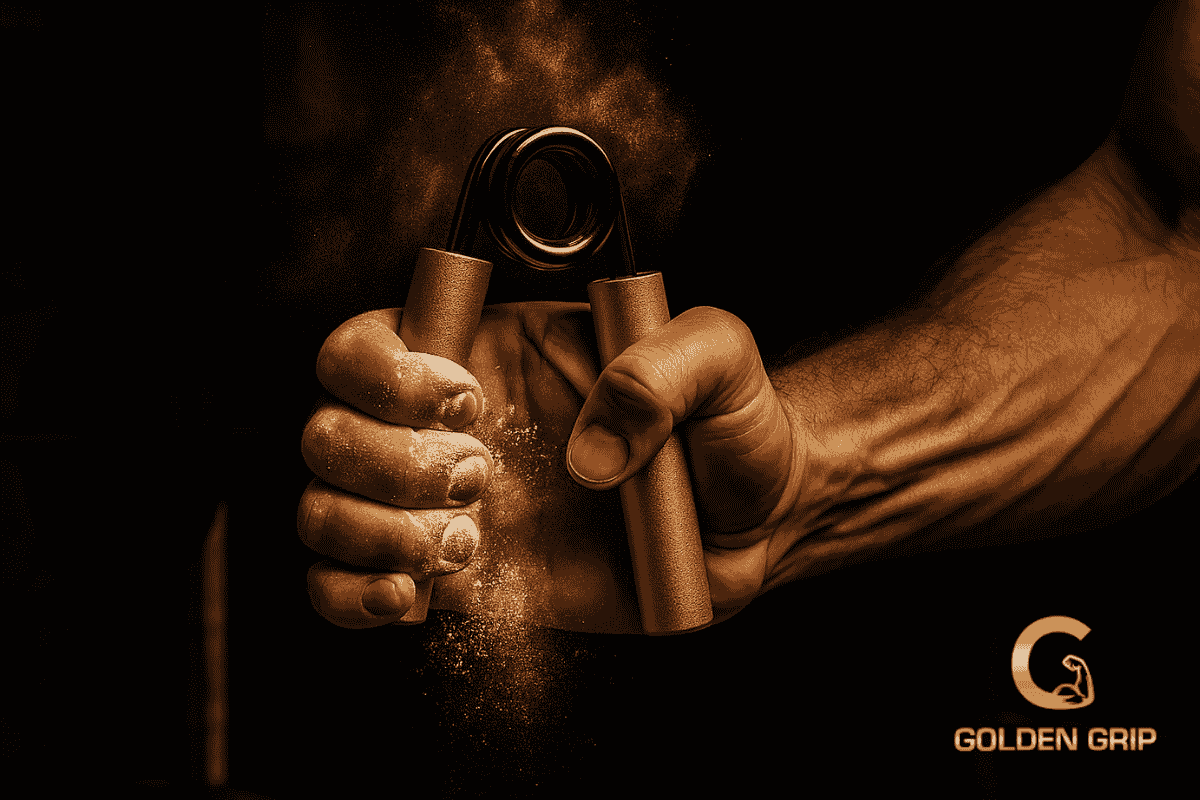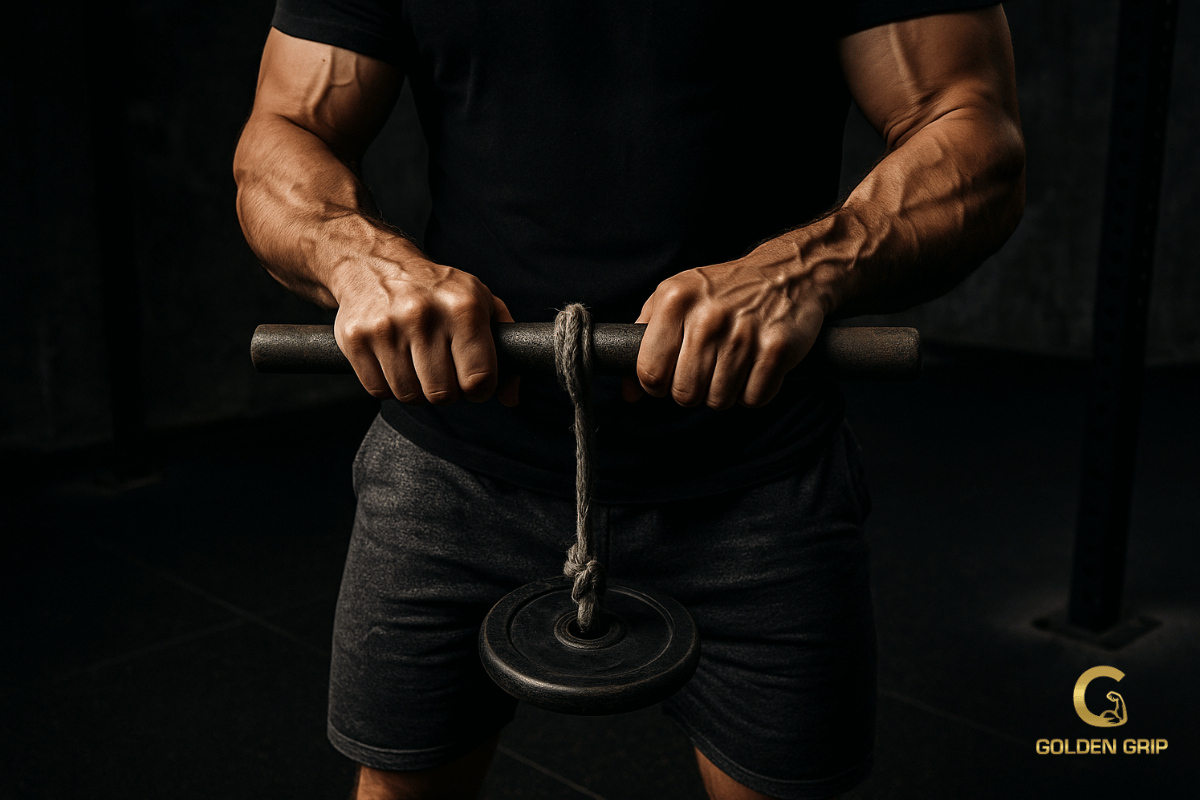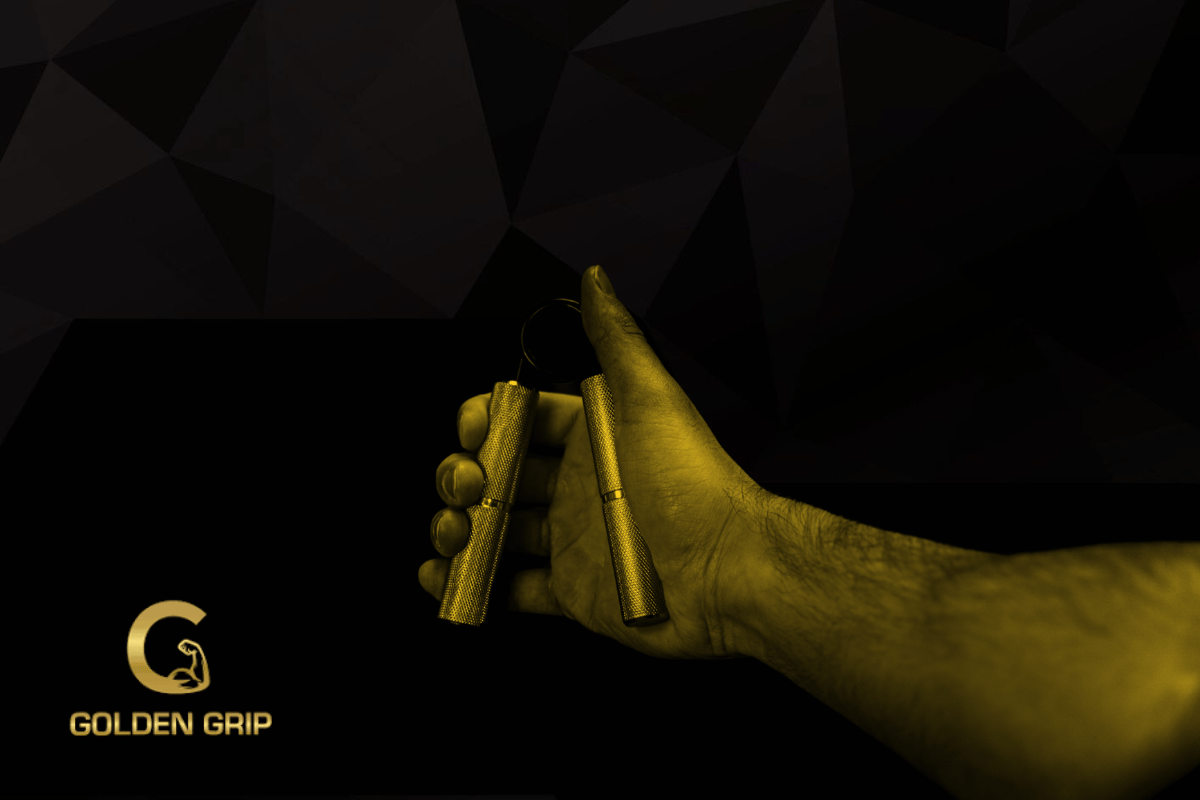The Ultimate Guide on Hand Grippers — Build Bone-Crushing Grip
TL;DR — Close Harder, Recover Smarter
Start here: Choose a gripper you can close for 8–12 reps. Train 2–3×/week. Warm up, set deep, crush from the pinky up. Balance every crush day with extensor work.
Progress: Own 3×12 clean reps → move up one level. Use negatives, overcrushes, and timed holds sparingly. Deload every 6–8 weeks.
Health: If elbows bark, trim volume, add wrist extension and rice-bucket work, then ramp back up.
Hand grippers separate lifters from legends. They aren’t a gimmick — they’re a battleground. When your grip fails, every other muscle might as well be asleep. Chalk up, grab a gripper, and you’ll find out who you are real quick. This tool doesn’t just build forearms — it builds discipline and a work ethic that shows up in every PR and every handshake. Strongmen, armwrestlers, climbers, fighters, and old-school lifters have all turned to grippers to test and forge raw power. But most people use them wrong, quit early, or miss the point entirely. This guide is your blueprint — from anatomy to advanced routines, from mindset to injury prevention. If you want the grip that never quits, let’s get to work. Steel never lies.
- Why Hand Grippers Matter
- Hand Gripper Anatomy & Types
- The Science of Grip Strength
- Gripper Technique Masterclass
- Hand Gripper Routines: Beginner to Pro
- Common Pitfalls and Fixes
- Programming, Progression, and Peaking
- Hand Health & Recovery
- Athlete Spotlights & Testimonials
- Grip Strength Training FAQ
Why Hand Grippers Matter
Every strongman, powerlifter, climber, or wrestler knows the pain of weak grip. Doesn’t matter if you pull 250 kg from the floor — if your hands fail, your back and legs don’t get to join the fight. Grippers train the one thing most lifters neglect: the ability to squeeze, crush, and hold when your whole body is begging to let go. The lifter with strong hands owns the handshake, the deadlift, the farmer’s walk, the climb, the row, the carry. No excuses. Strong grip means more reps, more control, more confidence. Your forearms get thicker, your wrists get sturdier, and the strength walks with you everywhere.
Grippers also train mental toughness. You’ll fail. Your skin will tear. You’ll hit plateaus. But every time you close a harder gripper, you prove something. There are no participation trophies in grip. It’s win or walk away.
Hand Gripper Anatomy & Types
Classic grippers are cold-forged steel: two knurled handles with a torsion spring. They hammer your forearm flexors (crush) while the extensors and wrist muscles stabilize. No fluff. Just steel and effort.
Gripper options:
- Torsion Spring Grippers: Fixed resistance. Best for max closes, singles, and holds.
- Adjustable Grippers: Great for warm-ups and volume. Less precise for true max work.
- Captains of Crush (CoC): Gold standard for serious grip. A certified #3 close puts you in rare air.
- Rolling/Thick Handles: Train support and open-hand strength; great accessory for gripper carryover.
- Pinch Blocks: Not a gripper, but critical for thumb power and full-hand strength.
Choose with intent. If you want proof of progress, use calibrated steel. Numbers don’t lie.
The Science of Grip Strength
Crushing involves flexor digitorum profundus/superficialis and flexor pollicis longus as prime movers, with brachioradialis and wrist musculature locking the line. Forearms skew endurance-heavy, but they still respond to progressive overload — just respect tendon timelines. Connective tissue adapts slower than muscle. Push too fast and you’ll meet tendonitis. The fix: cycle intensity, progress in small steps, and keep extensors honest.
Coach’s note: Treat grip like any other muscle group — periodize it. Alternate heavy singles with volume phases. Log reps, holds, and set quality, not just PR attempts.
Gripper Technique Masterclass
- Placement: Sink the base handle deep into the palm, just above the first finger crease. Create a stable “shelf.”
- Set: Use the off hand to pre-set for hard closes (credit-card or parallel set standards if you’re chasing certifications).
- Crush: Drive from the pinky up. Close the gap. Hold the touch for a beat. No air closes.
- Negatives: Two-hand close a tougher gripper, then resist the opening for 4–6 seconds.
- Overcrush: Once shut, try to “crush through” for 3–8 seconds. Builds finish and intent.
- Timed Holds: Lock a moderate gripper and hold 10–20 seconds. Teaches clamp under fatigue.
Form first. Film your closes. If you see daylight between handles, it doesn’t count.
“Old wrist pain down, new PRs up. Simple tool, huge carryover.” — Thomas, lifter
Hand Gripper Routines: Beginner to Pro
Beginner (first 8–12 weeks)
- Choose a gripper you can close for 8–12 reps.
- 3×8–12 per hand, 90 s rest, 2×/week.
- Finish with extensor bands 2×20 and light wrist extension 2×20.
- Progress: When you own 3×12 clean, move up one level.
Intermediate (power + endurance)
- Warm-up: easy gripper 1×20 per hand.
- Work: 4×6–8 tough reps.
- Negatives: 2×3–5 on a harder gripper (assist shut, slow open).
- Overcrush: 2×3–8 s holds at full close.
- Burnout: 1×max reps on an easier gripper.
- 2–3×/week; deload every 6–8 weeks.
Advanced (peak strength & lockout)
- Warm-up: 2×15–20 light.
- Singles: 5–8 attempts on your limit gripper, 2–3 min rest.
- Partials: 3×5 to ~90% close on a stiffer gripper.
- Negatives: 3×3 at 4–6 s eccentrics.
- Timed holds: 3×10–20 s clamped.
- Finish with extensor/pump work (bands or rice bucket).
Specialty add-ons
- Rice bucket: 2–3 min circuits for blood flow and tendon care.
- Band extensions: 3×15–25 every session.
- Thick-handle holds: 2–3×30–60 s for support strength.
Common Pitfalls and Fixes
Bad technique: Half closes and index-dominant squeezes. Fix: Set deeper; lead with pinky/ring.
Too often, too heavy: Daily maxing stalls gains. Fix: 2–3×/week with wave-loading; schedule deloads.
One-hand bias: Dominant-hand only invites injury. Fix: Train both, always.
No extensor work: Overuse shows up at the elbow. Fix: Bands or rice after each session.
Ego jumps: Skipping levels. Fix: Earn 3×12 clean before moving up.
“Started with the basics, couldn’t even close the #1. Three months later, I’m repping #2s and my handshake finally gets respect at work.” — David, amateur armwrestler
Programming, Progression, and Peaking
- Blocks: 6–8 weeks build, 1–2 weeks deload.
- Track: Best single, clean rep PRs, timed holds. Write it down.
- Progress: Add reps or resistance — not both in the same week.
- Rotate: Change main gripper every 2–4 weeks to keep gains coming.
- Peak: 7–10 days before a test, drop volume 40–60%, keep intensity.
- Assess: Measure forearm size (relaxed/flexed) monthly and note elbow health.
Hand Health & Recovery
- Contrast buckets: 90 s hot → 90 s cold × 5 rounds.
- Stretch: Flexor/extensor stretches post-session; don’t skip thumb work.
- Soft tissue: Ball/roller on tight forearm lines 3–5 min.
- Active recovery: Light rice bucket or band extensions on off days.
- Deloads: Halve volume every 6–8 weeks.
- Fuel & sleep: Protein, hydration, 7+ hours — non-negotiable.
If you feel sharp pain, tingling, or persistent weakness, shut it down and get checked. Play the long game.
Athlete Spotlights & Testimonials
Devon Larratt — Armwrestling icon. Lever-based wrist/forearm work, but never skips crush training. Thumb, pronation, and clamp strength win matches.
Lee Priest — High-rep direct forearm work for density and tendon health. Volume made the difference.
Frank McGrath — Came back from injuries with blood-flow-first training: pumps, stretching, soft tissue, then progressive load.
“Added grippers to strongman prep. Stones and farmers stopped slipping. Hands used to give out — not anymore.” — Jack, strongman competitor
Coach’s Picks — Build Your Gripper Stack
Start with three: warm-up, working, and challenge gripper. Add finger extension bands and a pinch block. That’s your base.
Grip Strength Training FAQ
2–3×/week. Keep at least one day off between heavy sessions.
A gripper you can close 8–12 times clean. Most men: 40–60 kg; most women: 20–40 kg (varies by brand).
Yes—just avoid max grippers right before your heaviest deadlifts.
Own 3×12 clean per hand at your current level, then step up.
Great for warm-ups and volume. Use fixed steel to test max power.
Light gripper 15–20 reps, then band extensions and finger stretches.
File sharp knurling, chalk lightly, and build calluses gradually.
Strength in 4–6 weeks; size/shape in 6–8+ weeks.
Always. Symmetry prevents pain and boosts progress.
Because almost strong isn’t strong. Handles must touch—full range or it doesn’t count.
Conclusion
Steel doesn’t care about excuses. It rewards effort, consistency, and grit. Close the gripper, log the win, and keep climbing. You’ll build more than muscle; you’ll build resilience you carry everywhere. The lifter who wins is the one who doesn’t quit — one more clean rep, one more clean session, day after day.
Disclaimer: Educational only. Not medical advice. If you have persistent pain or injury, consult a professional. Train smart and progress patiently.



